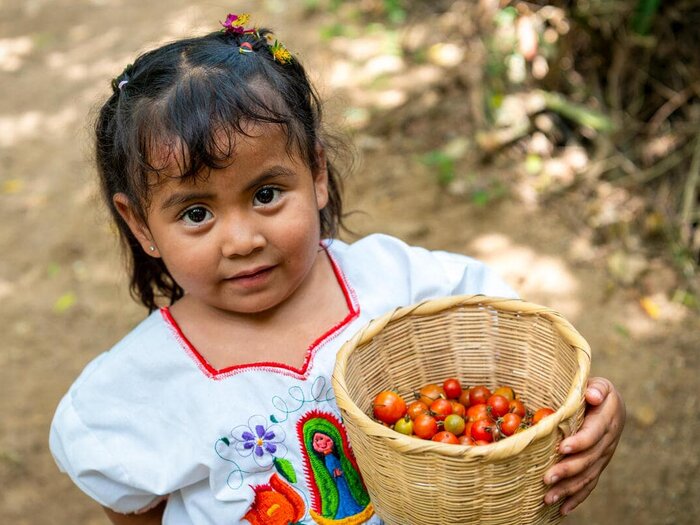Home grown school feeding
- 46 countries
- have WFP-supported home-grown school feeding programmes
What if we could dramatically improve the nutrition of schoolchildren and boost local economies with one single policy? The World Food Programme (WFP)’s Home Grown School Feeding initiative is striving to do just that.
This innovative approach links school feeding programmes with local smallholder farmers to provide millions of schoolchildren in 46 countries with food that is safe, diverse, nutritious, and above all local.
The benefits of this are evident and manifold. The schools provide local farmers with a predictable outlet for their products, leading to a stable income, more investments and higher productivity. The children enjoy healthy, diversified food; this makes it more likely that they will stay in school, perform better and improve their adult job prospects. At the community level, Home Grown School Feeding initiatives promote nutrition education and better eating habits, and encourage the diversification of production with a special emphasis on local crops. Community involvement, in turn, enhances the sustainability of programmes.
A solution for each country
-
Honduras
-
In Honduras, where WFP’s work in the aftermath of hurricane Mitch has grown into a national school feeding programme reaching some 1.3 million schoolchildren, WFP is supporting the government in testing and implementing different Home Grown School Feeding models. The regular food basket is complemented with fresh local food, such as fresh vegetables and eggs, purchased through the Cajas Rurales (cooperatives of small farmers), the Mancomunidades (associations of communities), or directly by the schools.
-
Kenya
-
Kenya, on the other hand, has developed a Home Grown School Feeding programme based on cash transfers. Under this model, WFP transfers cash to the bank accounts of schools, so they can purchase fresh food locally for the daily menu. The amount of cash the schools receive depends on the enrollment rate and number of school days. The model has in-built flexibility to decide which produce to buy, when and how much. The food is procured by school committees on which teachers, parents and community members are represented: this ensures accountability and transparency, and reduces mismanagement of cash or food.
-
Haiti
-
In Haiti, WFP works directly with the government to build the foundations of a nationally-owned school feeding programme linked to local agricultural production. In October 2015, with support from Brazil, WFP launched a Home Grown School Feeding programme with diversified seasonal menus in the department of Nippes, to provide schools with food sourced from small farmers in the region. In the 2016/2017 school year, the programme is set to double its reach to 7,000 children.
A Resource Framework on Home Grown School Feeding
Home Grown School Feeding programmes can significantly contribute to the achievement of the Sustainable Development Goals (SDGs), particularly SDG 2 (on ending hunger, achieving food security and improved nutrition, and promoting sustainable agriculture) and SDG 4 (on quality education). In recognition of this, numerous governments and regional organizations, including the African Union and the Community of Latin American and Caribbean States, are including these initiatives in their strategies for achieving food security and implementing the 2030 Development Agenda.
As more national governments initiate and scale up investments in Home Grown School Feeding programmes, global partners are responding to requests for technical assistance for effective, efficient and high-quality programmes. WFP, with its own Centre of Excellence against Hunger (CoE), has joined forces with the Food and Agriculture Organization of the United Nations (FAO), the Global Child Nutrition Foundation (GCNF) the Partnership for Child Development (PCD), the International Fund for Agricultural Development (IFAD) and New Partnership for Africa’s Development (NEPAD) to create a Resource Framework for the design and implementation of government-led Home Grown School Feeding programmes.

